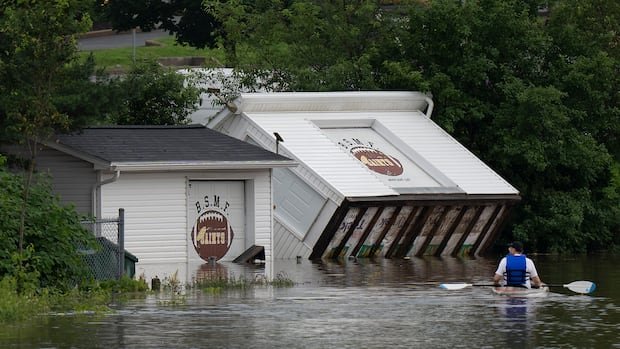
Once-in-1,000-years flood, even for ‘flash flood alley’
The devastating floods took place in central Texas Hill Country, nicknamed “flash flood alley” because it has one of the greatest risks of flash floods in the United States, according to the Lower Colorado River Authority. It credits the steep terrain, shallow soil and unusually high rainfall rates.
The flooding took place along both the Colorado River and the Guadalupe River, which runs parallel to the Colorado in this part of Texas, about 60 kilometres south.

Floods along the Guadalupe previously killed 10 people in 1987 and 12 people in 1998, though that’s far less than the death toll so far of at least 104 in Friday’s event.
More than 30 centimetres of rain fell within a few hours early morning Friday. Colorado State University climatologist Russ Schumacher posted on Bluesky that six-hour rainfall totals made this a once-in-1,000-years event. The waters of the Guadalupe River rose eight metres in only 45 minutes before daybreak, washing away homes and vehicles, and rain continued through the weekend.

Study points to role of climate change
How much of a contribution did climate change make to this unusual event? On Monday, scientists at ClimaMeter released a study trying to answer this question.
The study is based on a peer-reviewed method developed by researchers at the French National Centre for Scientific Research, but the study itself has not yet been peer-reviewed.
By comparing climate data from an earlier period (1950 to 1986) to more recent data (1987-2023), the research found average temperature increases of up to 1.5 C in the flood-affected area, and conditions up to seven per cent wetter than during similar events in the past.
Warmer temperatures in general are connected to heavier precipitation because warmth provides energy for storms and warmer air holds more water.
“Natural variability alone cannot explain the changes in precipitation associated with this event” and “the changes we see in the event compared to the past may be due to human-driven climate change, with a contribution from natural variability,” they wrote.
However, no studies have yet calculated the likelihood of this event with or without human-caused climate change, which requires detailed modelling.
In the wake of the devastating flooding in Texas, several experts have warned that flood preparedness — including flood plain mapping and water mitigation — in Canada is years behind.
How heat in the ocean and atmosphere plays a role
Climate change has led to warmer oceans, which evaporate more water into an atmosphere. In places such as the Gulf of Mexico, where the sea surface temperatures were up to one degree Celsius above average, that fuels storms such as tropical storm Barry. Barry’s remnants brought heavy rain into central Texas, where it stalled, dumping water all in one area, Climate Central reported.
CBC News science and climate specialist Darius Mahdavi breaks down how record-warm ocean waters mean Canada could be in a dangerous situation heading into the peak of Atlantic hurricane season should any make landfall here.
Sometimes, storms like that get picked up and carried away by an air current called the jet stream.“But that’s just not over Texas currently,” Shel Winkley, a meteorologist with Climate Central, told The Associated Press. Even more moisture came from areas over the Pacific Ocean to the west.
“In a warming climate we know that the atmosphere has more moisture to give, to hold on to and then to release. But also the thing that we know about climate change is that our rain events are not as uniform as what they used to be,” said Winkley. “So, you’ll get these big rain events happening in localized areas, tapping into the historic level of moisture in the atmosphere.”
How drought made things worse
The region hit by the flooding had been in a drought. Climate change is expected to lead to more frequent, intense and longer lasting droughts with climate change, especially in regions such as the U.S. southwest, which has already seen a decrease in annual precipitation since 1900.
Eighty-five per cent of Kerr County was in an “exceptional drought” — the highest level — over the past three months, while the entire county was listed as being in “extreme drought,” the second-highest, reports the U.S. Drought Monitor at the University of Nebraska-Lincoln in collaboration with the U.S. government.
That can increase the risk of flooding by killing off vegetation and making soil less able to absorb water.
Brett Anderson, a senior meteorologist at AccuWeather, told The Associated Press the water “just runs right off of it. It’s like concrete.”
Robert Henson, a meteorologist and writer with Yale Climate Connections, told AP that the combination of many factors, including weather and geography, all contributed. “As is often the case with the worst disasters, many things came together in a terrible way.”


